News
Regulation News
Regulation News
Browse all Regulation related articles and news. The latest news, analysis, and insights on Regulation.
What Does the Genius Stablecoin Law Mean?
A newly introduced bill in the United States has opened the door to a major transformation in the crypto world. Called the “Genius Stablecoin Act” (GENIUS Act), this bill particularly concerns stablecoin issuers like Tether (USDT). The law foresees that Tether, regardless of where it is headquartered, will now be subject to U.S. laws. This is a critical development not just for Tether but for the entire global stablecoin sector.Tether to Be Subject to U.S. RegulationsThe most notable clause in the new bill is the principle of “extraterritoriality,” which includes foreign companies within the jurisdiction of the United States. In other words, every stablecoin issuer that serves users in the U.S.—even if their headquarters are abroad—will now be required to comply with American regulations. Tether, which is based in El Salvador, will be directly affected by this regulation.Tether CEO Paolo Ardoino stated that they view this initiative positively and aim to maintain a constructive collaboration with U.S. regulators. However, the company will now have to comply with stricter reporting and transparency rules.What Does the GENIUS Act Bring?According to the bill, stablecoin-issuing companies will face the following regulations:1:1 Reserve Requirement: Every stablecoin must be fully backed by assets such as U.S. dollars or short-term Treasury bills.Licensing and Supervision: Projects over $10 billion will be federally licensed, while smaller ones will be licensed at the state level.AML/KYC Compliance: All issuers will be subject to anti-money laundering and know-your-customer rules.Regular Reporting: Monthly reserve reports and annual independent audits will be required.Although it is not yet certain whether the GENIUS Act will become law, the framework it proposes signals the beginning of a period where stricter rules will dominate the stablecoin market. As the U.S. continues its efforts to expand influence in this area, a new adaptation process may begin for giants like Tether. During this process, both investors and industry players will have to be more prepared for regulatory uncertainties.
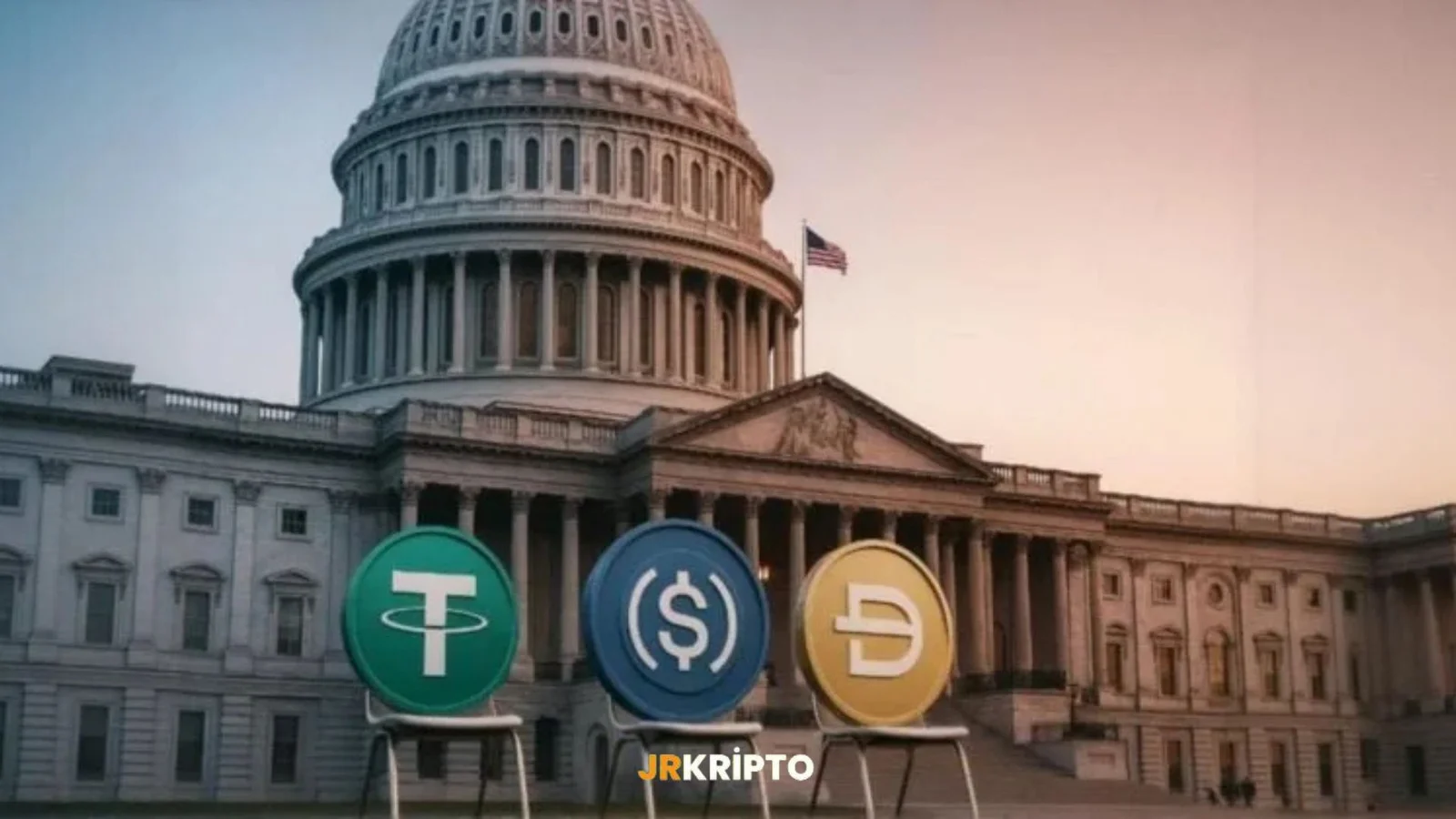
U.S. Vice President J.D. Vance Will Speak at the Bitcoin 2025 Conference
U.S. Vice President J.D. Vance will take the stage at the Bitcoin 2025 Conference, which will be held in Las Vegas from May 27 to 29, 2025. This speech will be the first public address in which a U.S. vice president openly supports Bitcoin. This event, which holds significant symbolic importance for the crypto world, shows the growing influence of Bitcoin in politics.Historic Conference, Historic SpeechBitcoin 2025 is a massive event expected to attract more than 30,000 participants from around the world. Vance, who will be part of the conference's “Code + Country” sessions, will deliver his keynote speech on the morning of May 28 at 9:00 AM.This speech is considered a continuation of the Trump administration’s clear stance on crypto. Coming exactly one year after President Donald Trump’s speech at the 2024 Bitcoin conference, this move demonstrates the ongoing public support for Bitcoin from the White House.Vance's Approach to BitcoinDuring his tenure in the Senate, Vance displayed an open attitude toward crypto assets and drew attention with his views on financial sovereignty. He frequently cited incidents such as the freezing of bank accounts in Canada in 2022 as examples of the control risks posed by centralized systems. He also publicly criticized the SEC’s strict enforcement actions against crypto companies.According to federal financial disclosures, J.D. Vance’s personal Bitcoin holdings are reported to be between $250,000 and $500,000. This positions him not only as a political supporter but also as an active investor who believes in crypto assets.Broad Participation, Strong MessagesThe Bitcoin 2025 conference is not limited to Vance’s speech. The event will also feature appearances by Eric Trump, Donald Trump Jr., White House Artificial Intelligence and Crypto Advisor David Sacks, Strategy Board Chairman Michael Saylor, and Silk Road founder Ross Ulbricht.This broad participation reveals how the crypto world has become a growing force not only in technology but also in the fields of economy and politics.

Bitcoin's New Strategic Player: David Bailey's "Nakamoto" Initiative
As institutional moves within the Bitcoin ecosystem continue to increase day by day, a notable step has also come from U.S. President Donald Trump’s crypto advisor and BTC Inc. CEO David Bailey. Bailey has raised $300 million to establish a publicly traded Bitcoin investment company named “Nakamoto.” The company’s strategy is based on a model that places Bitcoin at the center of its balance sheet.Nakamoto: A New Generation Investment Firm Adopting Bitcoin as a Core AssetNakamoto takes its name from Bitcoin’s mysterious creator Satoshi Nakamoto and aims to build a Bitcoin-based capital structure by adopting the strategy model led by Michael Saylor. This structure, financed with $200 million in equity and $100 million in convertible debt, will allow the company to benefit from the appreciation of digital assets while diversifying traditional investment portfolios.First Targets: Brazil, Thailand, and South AfricaNakamoto aims for cross-border expansion. In the first phase, the company plans to invest in companies in Brazil, Thailand, and South Africa to expand its global presence. The goal is to accelerate Bitcoin adoption in these countries and secure a strategic position in their local economies.Public Offering in the SummerNakamoto announced it will go public through a reverse merger with an existing company listed on Nasdaq. This process is expected to be completed in the summer. The company also plans to establish an advisory board composed of well-known experts in finance and crypto.Institutional Bitcoin Adoption Is IncreasingThe Nakamoto move comes at a time when interest in Bitcoin at the institutional level continues to grow. David Bailey’s initiative, similar to Jack Mallers’ Twenty One Capital and Vivek Ramaswamy’s Strive Asset Management, highlights a Bitcoin-focused strategy at the institutional level.“Nakamoto” is not just a new Bitcoin company; it represents a new vision for institutional adoption of digital assets. This step, led by David Bailey, could signal the beginning of a new era in which investment models centered around Bitcoin become increasingly common.
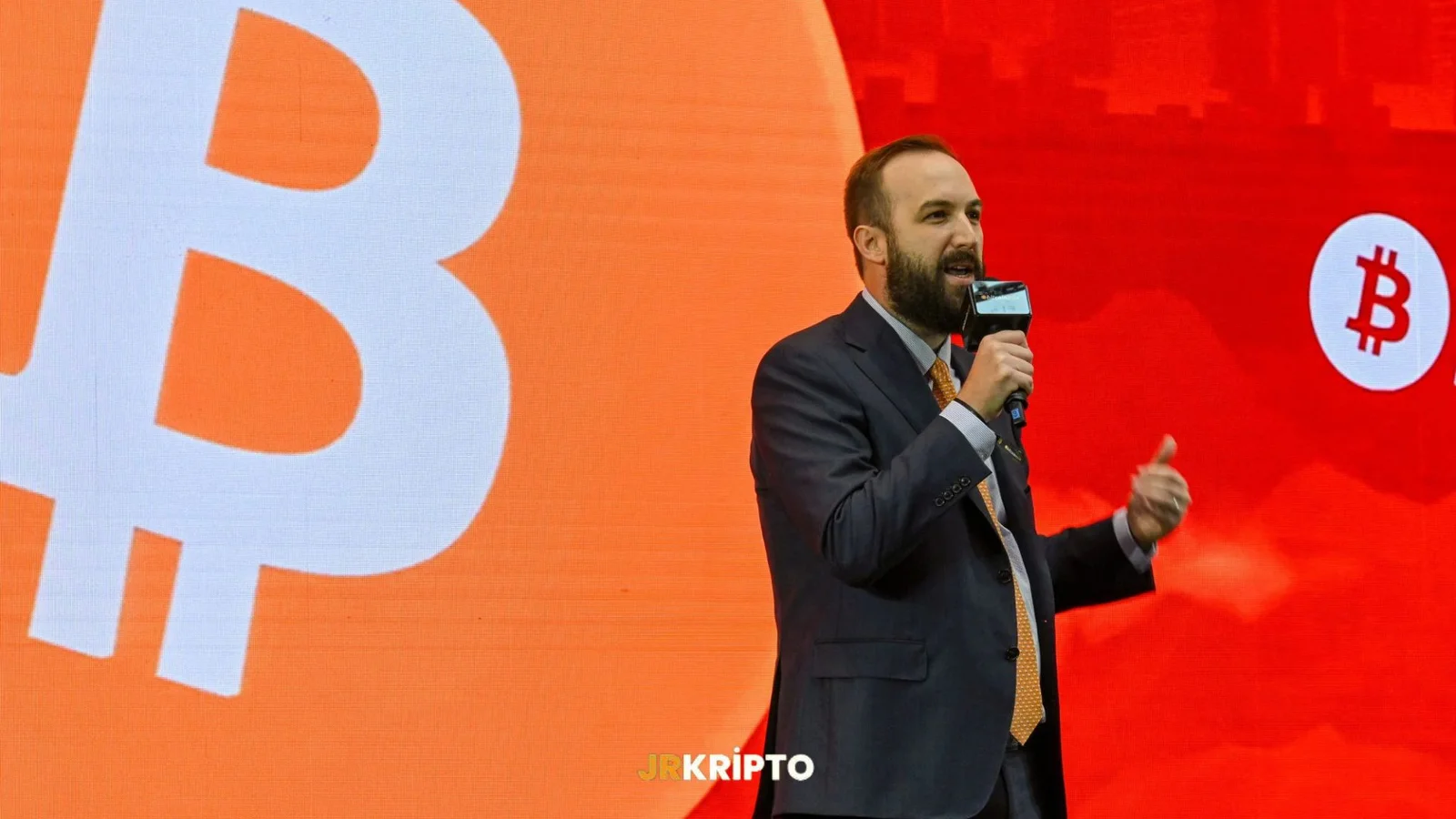
Balanced Message from Powell: Is the Fed Preparing the Ground for June?
On the evening of May 7, 2025, the U.S. Federal Reserve (Fed) kept its policy rate steady at the 4.25–4.50% range. However, what markets were really curious about were the statements made by Fed Chair Jerome Powell following the meeting. Powell, in a cautious yet optimistic tone, signaled the beginning of a new era in monetary policy.Emphasis on "Data-Driven Flexibility" Instead of "Wait and See"Powell stated that the U.S. economy remains strong but noted that upward risks persist on both the inflation and unemployment fronts. He emphasized that despite the slowdown in inflation, concerns about its persistence continue. Nevertheless, he delivered a message of flexibility in monetary policy: he said the Fed will continue to evaluate its decisions in light of current data. This statement keeps the possibility of a rate cut at the June meeting alive.Laying the Groundwork for JuneA recent statement by Cleveland Fed President Beth Hammack, saying "May is too early, but June is seriously on the table," aligns with Powell's message. Market pricing has also taken shape in this direction. Interest rate futures indicate that a 25 basis point cut in June has gained significant probability.Dynamics Between the Trump Administration and the FedPowell, in response to President Trump's explicit calls for a rate cut, emphasized the Fed’s independence. By saying “We base our decisions on data and analysis,” he maintained a balanced stance against political pressure. Still, it appears that the Trump administration expects a rate cut to support growth as inflation declines. This political pressure is one of the factors increasing market expectations for June.Markets and Risk Assets Gain StrengthThere was no sharp correction in markets following the Fed’s decision to hold rates steady. On the contrary, with uncertainty diminishing and expectations of easing in the summer, risk appetite has increased. Gold tested the $3,300 level. A recovery trend was observed in Bitcoin and tech stocks. Especially the retreat in bond yields shows that investors are repositioning.Powell Cautious, Market HopefulPowell’s remarks suggest that the Fed may be creating room to maneuver for a rate cut in the summer. Even if May was a pause, a clear “preparation period” atmosphere has formed for the June meeting. If the downward trend in inflation continues and more signs of slowing growth emerge, summer 2025 could begin with a rate cut.Balances in the economy remain delicate, but the Fed’s clear messaging is being seen as a positive step for markets.

May Interest Rate Decision Is Being Announced: Eyes Are on Powell's Statement
U.S. Federal Reserve Expected to Hold Rates Steady on May 7, 2025, as Attention Turns to JuneThe U.S. Federal Reserve (Fed) is widely expected to keep its policy rate unchanged at its May 7 meeting. However, all eyes are now on June. Recent economic data, market pricing, and political pressures are increasing the likelihood of a rate cut as summer approaches.Hammack Sends a Clear SignalThe Fed has held interest rates steady in the 4.25%–4.50% range for the past two meetings. While inflation data suggests a mild cooling, signs of weakening economic growth are also emerging. Cleveland Fed President Beth Hammack said May is too early for a rate cut, but referred to June as a potential turning point.Powell to Speak: His Messages Will Be CrucialFed Chair Jerome Powell’s statements today will play a key role in shaping market sentiment. With his usual “data-dependent” language, Powell is expected to signal that a rate cut window could open in June. However, he may also adopt a selective tone without fully committing.Trump Sends a Clear Message to the Fed: “Cut Rates”U.S. President Donald Trump has made interest rate cuts a central focus of his economic policy. A statement from the White House emphasized, “Prices are falling, energy is getting cheaper, the Fed should cut rates now.” Having won the 2024 election, Trump aims to establish a growth model driven by employment and investment.What Are Markets Expecting?Markets had already priced in a pause at the May meeting. However, interest rate futures for June now reflect a strong probability of a 25 basis point cut. Assets like gold, Bitcoin, and the Nasdaq have already responded positively to this expectation.June Could Be a Turning PointThe June 17–18 meeting is shaping up to be a pivotal moment for 2025. With inflation momentum slowing and the labor market softening, the first signals of a rate cut could be delivered.If the Fed announces today that it is holding rates steady, it will come as no surprise. The real focus will be on Powell’s nuanced remarks. Any potential rate cut in June will be a key indicator of the direction of the U.S. economy and global market risk sentiment.
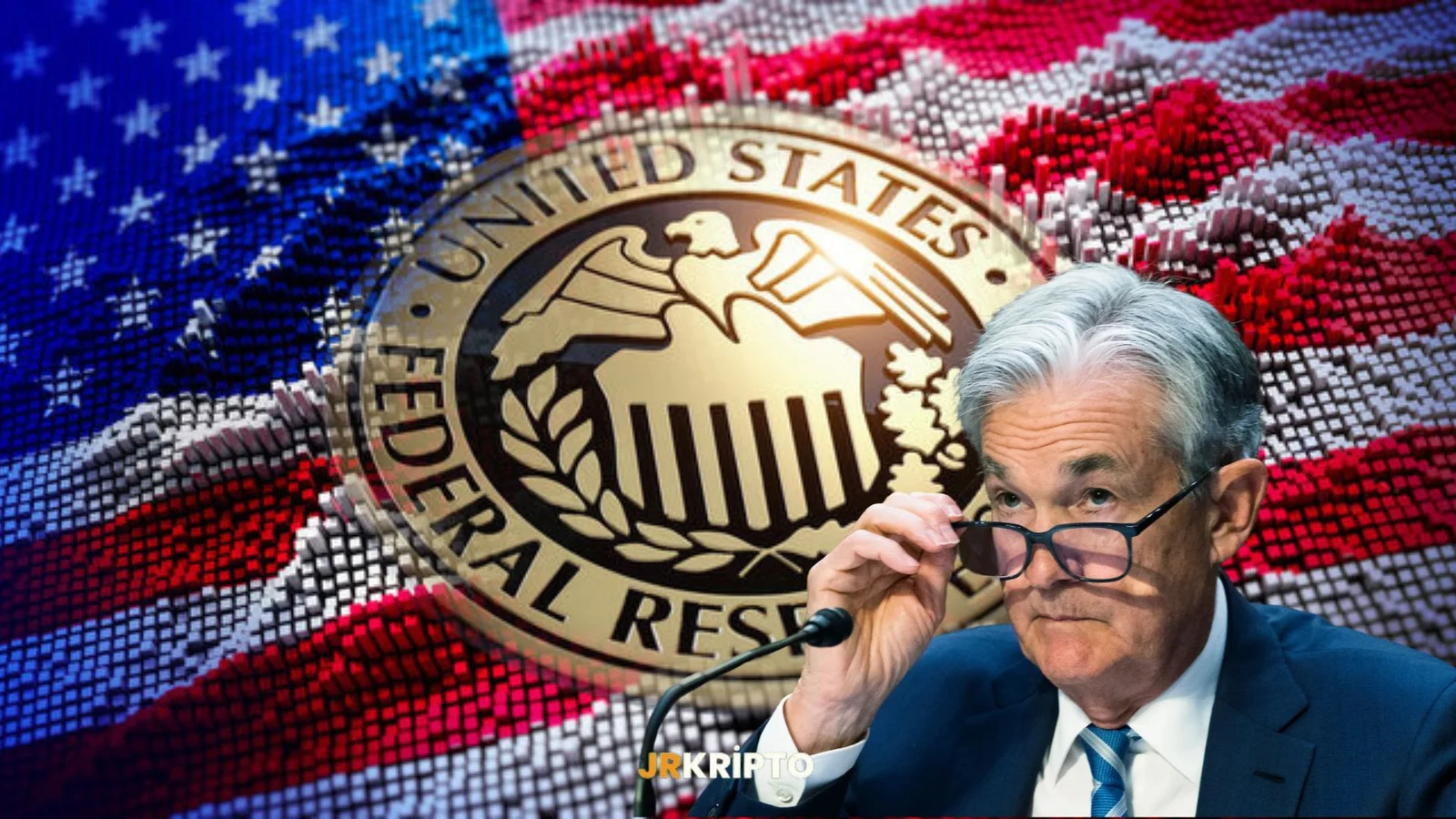
Daily Market Summary with JrKripto 7 May 2025
You can find today’s edition of “Daily Market with JrKripto,” where we compile the most important developments in global and local markets, below. Let’s analyze the general market conditions together and take a look at the latest assessments.Bitcoin (BTC) is currently trading at $97,000. With a strong upward trend that started from the $75,930 support, BTC has surpassed the $95,000–$96,000 resistance zone and continues to gain upward momentum. If this movement continues, the next target could be the $101,000 level. However, in case of profit-taking, the $94,000–$95,000 range can be monitored as the first support zone. If this level is breached, $90,500 and then $86,500 will be the next key support levels to watch.Ethereum (ETH) is trading at $1,830. The recovery process that began from the $1,486 support has lifted ETH back above the $1,800 level. If the upward move continues, the $1,888 and $1,950 levels could act as resistance. However, if the price pulls back from $1,830, the first support is at $1,790. If it remains below this level, $1,700 could come into play as strong support. For ETH to maintain its upward trend, holding above the $1,790 level is critically important.Crypto NewsTrump: "I will make an announcement that will shake the world."Trump on China: "They want to negotiate."Bitwise filed a spot ETF application for NEAR.The U.S. and U.K. are expected to sign a new trade deal this week.The Governor of New Hampshire signed a bill allowing the state to invest in Bitcoin and cryptocurrencies.Standard Chartered Bank forecasts $BNB will reach $2,775 by 2028.Chinese President Xi: "We are ready to work with EU leaders to broaden mutual openness and handle frictions and disputes appropriately."Top Gainers in CryptoKAITO → up 49.9% to $1.25SYRUP → up 26.9% to $0.2388CVX → up 14.4% to $3.14STX → up 12.7% to $0.8553LTC → up 12.0% to $91.79Top Losers in CryptoMOVE → down 17.9% to $0.1573VIRTUAL → down 17.4% to $1.36LAYER → down 8.7% to $1.78FARTCOIN → down 7.8% to $1.02FRAX → down 6.0% to $2.00Fear IndexBitcoin: 62Ethereum: 43DominanceBitcoin: 65.25% ▼ 0.03%Ethereum: 7.50% ▲ 0.68%Daily Net ETF FlowsBTC ETFs: -$85.70 MillionETH ETFs: -$17.90 MillionData to Watch Today17:30 – U.S. EIA Crude Oil InventoriesForecast: -1.700M | Previous: -2.696M21:00 – FOMC Statement21:00 – Interest Rate DecisionForecast: 4.50% | Previous: 4.50%21:30 – FOMC Press ConferenceGlobal MarketsThe day began with escalating tensions between Pakistan and India turning into active conflict. Reports indicate missile strikes, downed aircraft, and casualties. As both countries are nuclear powers, this conflict raises serious global concerns. Although markets are currently unresponsive, further escalation could negatively impact global markets.This morning, the focus in global markets is on the U.S.–China tariff talks planned in Switzerland. Optimism prevails with hopes that these negotiations might ease trade wars. U.S. and European futures, along with most Asian markets (excluding India), are trading positively. While Asian indices are seeing strong buying, European markets are expected to open flat but positive.In the U.S., the 9-day rally driven by optimism over tariffs has ended. Trump's newly announced tax policies targeting the film and pharmaceutical industries have dampened investor appetite. Furthermore, the announcement that U.S. Treasury Secretary Scott Bessent will meet China’s Deputy Prime Minister in Switzerland between May 9–12 will be closely watched.U.S. indices dropped yesterday:S&P 500: -0.77%Dow Jones: -0.95%Nasdaq: -0.87%Only infrastructure (+1.23%) and energy (+0.10%) sectors posted gains among the 11 sectors of the S&P 500. Healthcare suffered the biggest loss, falling by 2.76%. The industrials and consumer discretionary sectors both declined by 0.85%.The U.S. also released trade data for March. The trade deficit widened by $17.3 billion to $140.5 billion. Most of this increase came from a $16.5 billion rise in the goods deficit. The services surplus decreased by $800 million. While exports remained unchanged, imports rose by 4.4% in anticipation of expected tariff hikes in April.Today, all eyes are on the Fed's interest rate decision. No change is expected in the rate. However, investors will closely monitor the pace of balance sheet reduction, long-term rate projections, and the Fed’s forward guidance signaled during the March meeting.Meanwhile, oil prices have begun to recover, driven by lower-than-expected crude inventory data and a downward revision of production forecasts by the International Energy Agency due to lower prices. This has supported energy sector performance.In general, markets today are navigating between optimism over U.S.–China talks, cautious pricing ahead of the Fed meeting, and the influence of geopolitical developments.Most Valuable Companies and Stock PricesMicrosoft (MSFT): $3.22T market cap, $433.31/share, ▼ 0.66%Apple (AAPL): $2.96T market cap, $198.51/share, ▼ 0.19%NVIDIA (NVDA): $2.77T market cap, $113.54/share, ▼ 0.25%Alphabet (GOOG): $1.99T market cap, $165.20/share, ▼ 0.51%Amazon (AMZN): $1.96T market cap, $185.01/share, ▼ 0.72%Borsa IstanbulDespite some mild buying yesterday, momentum in Borsa Istanbul remains weak. High interest rates, poor corporate earnings, and ongoing political risks continue to pressure the market. Retail and aviation stocks underperformed on concerns about weakening domestic demand. On the other hand, buying in banking, real estate investment trusts (REITs), mining, and defense stocks provided limited support to the index. Nevertheless, the BIST 100 index closed the day flat at 9,135 points. The intraday high was 9,228 points.Movements in both directions remain limited. Technically, the 9,044–8,870 range is still a strong support zone, consistent with previous lows. If the index holds in or just above this range, a continued rebound is possible. But a break below it could increase selling pressure and push the index down to 8,618–8,500. On the upside, initial resistance lies at 9,266. If this is breached, the 9,490–9,594 range is a key resistance zone. If this range is surpassed, the index may target 9,740–9,895–9,953 in the short term.On the macroeconomic side, TÜİK’s seasonally adjusted data shows monthly inflation rose slightly from 2.61% in March to 2.65% in April. Core inflation indicators (B and C indexes) accelerated to 2.84% and 3.02%, respectively, from 1.94% and 2.25% in March. Monthly increases in services hit 3.15%, while goods prices slightly declined (2.41%). Non-energy, non-food goods prices rose from 2.30% to 2.61%, largely due to currency effects.The CPI-based Real Effective Exchange Rate (REER) dropped 2.1% in April, reaching its lowest point since October 2021. This decline was driven by the Turkish lira’s depreciation—2.8% against the dollar and 7% against the euro. However, on an annual basis, REER remains at 11.6%, still indicating a zone of real appreciation.The Treasury borrowed a total of 35.3 billion TL yesterday through auctions, including non-competitive bids. In the 2-year fixed coupon bond auction, the average compound interest rate came in at 47.19%.Central Bank Governor Fatih Karahan stated in his presentation to the Turkish Parliament’s Planning and Budget Committee that current reserves are insufficient compared to short-term external debt and emphasized ongoing efforts to boost reserves.Also today, international credit rating agency Fitch will hold a webinar titled “Turkey’s Credit Outlook and Banking Sector.”Most Valuable Companies on Borsa IstanbulQNB Finansbank (QNBTR): 891.1B TL market cap, 267.75 TL/share, ▲ 0.66%Aselsan (ASELS): 626.54B TL market cap, 145.30 TL/share, ▲ 5.75%Garanti Bank (GARAN): 426.72B TL market cap, 101.50 TL/share, ▼ 0.10%Turkish Airlines (THYAO): 402.62B TL market cap, 289.50 TL/share, ▼ 0.77%ENKA Construction (ENKAI): 375.16B TL market cap, 63.10 TL/share, ▼ 1.41%Precious Metals and Exchange RatesGold: 4,199 TLSilver: 40.73 TLPlatinum: 1,228 TLDollar: 38.64 TLEuro: 43.90 TLWe’ll see you again tomorrow with the latest updates!

A New Trade Agreement Between the US and the UK is on the Way
The United Kingdom, United with the United States, is preparing to sign a new trade agreement this week. This step shows that despite the Trump administration's publicly perceived attitude as far from compromise, his team is conducting negotiations with 17 of the 18 major trading partners behind the scenes. According to the Financial Times, the new agreement between the US and the UK will be signed this week. Dec.What Does the Agreement Bring?The new trade package is aimed at reducing the effects of steel and automobile tariffs, especially those introduced during the Trump era. The UK had suffered losses in car and steel exports due to US tariffs of up to 25%. London hopes to reach a compromise by the end of this week to eliminate these harmful effects.Treasury Secretary Scott Bessent had previously stated in a statement that a tariff agreement for a major economy could be signed "as early as this week." The FT confirms that this country is the UK.Strategic Effects: Change of Direction in Trade?Sunday Sunday statements from the U.S. side,"we do not need our market, they want access to our market" draws attention to the emphasis. Trump has said in various press conferences that "we don't lose anything by not doing trade," arguing that the United States has the upper hand at the bargaining table.The UK's attitude towards the upcoming agreement with the United States is associated with the country's flexibility in the digital services tax and tariffs on US agricultural products. However, this situation may also set the stage for conflicts that may arise, especially in veterinary agreements with the European Union.Impact on the Cryptocurrency MarketThe signing of this trade agreement will show that the United States is not isolated and is open to compromise. This may trigger the perception that "uncertainty has been lifted" in the market. It is observed that such positive foreign trade news pushes up the price. For the cryptocurrency market, this agreement may be critical both for the recovery of the general market mood and for the legitimization of digital assets.
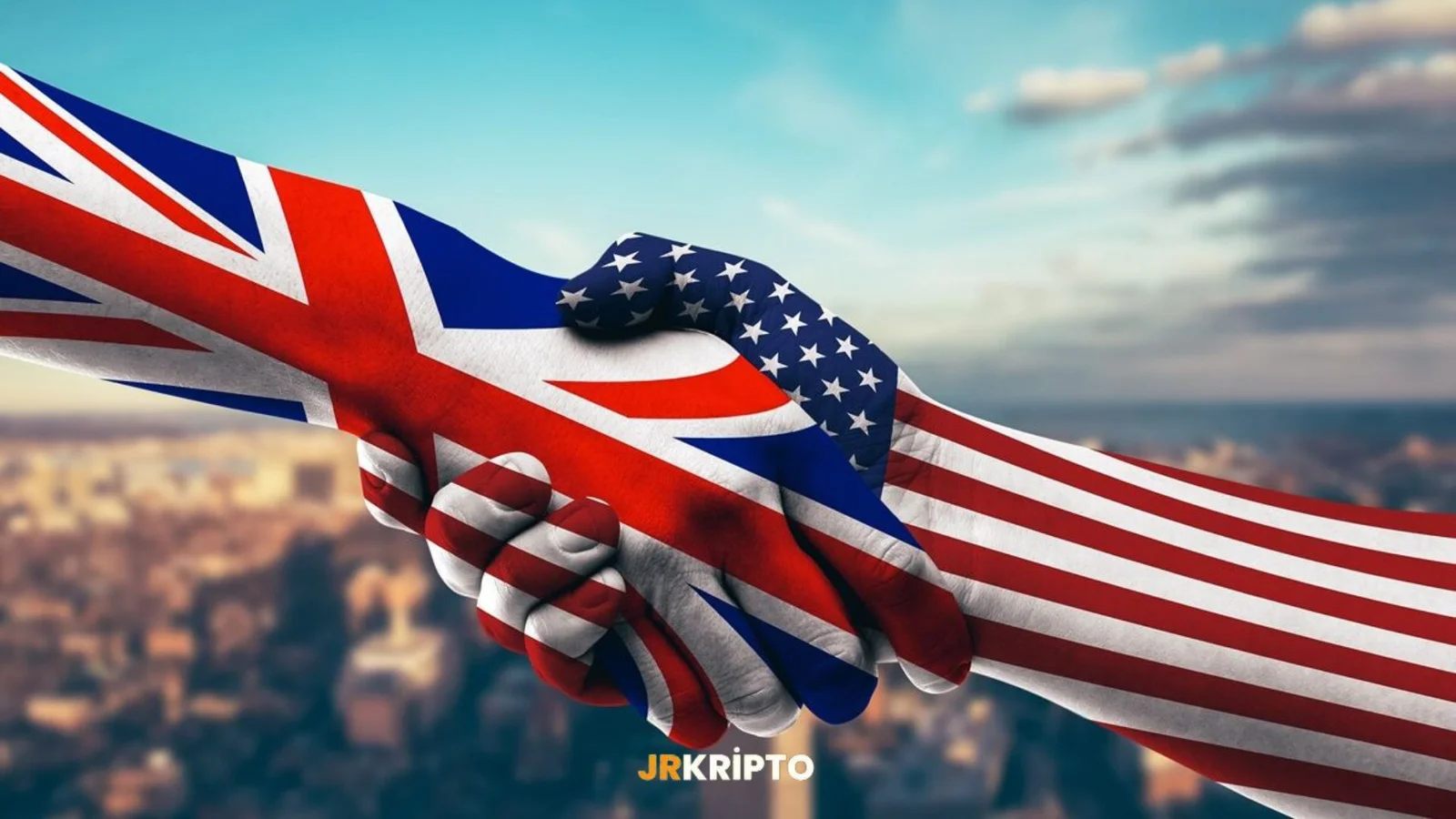
Historic Step from New Hampshire: Bitcoin Becomes an Official Reserve Asset
New Hampshire Becomes First U.S. State to Legalize Bitcoin Investment with Public FundsOn May 6, 2025, New Hampshire made history by becoming the first U.S. state to legalize the use of public funds for Bitcoin investment. Under the newly signed law, the state will be able to allocate up to 5% of its public assets to Bitcoin and similar digital assets.State Treasury Can Now Purchase BitcoinThe law, designated as HB 302, authorizes the New Hampshire State Treasury to direct up to 5% of public funds toward digital assets. However, there's a specific condition for such investments: only assets with a market capitalization exceeding $500 billion are eligible. Currently, the only asset that meets this threshold is Bitcoin.Moreover, these investments cannot be made directly. Instead, they must go through regulated ETFs or licensed custodial services, ensuring a model that prioritizes security and transparency.Inflation Fears and the Search for AlternativesWhy take such a step? The answer from one of the law's architects, Keith Ammon, is clear: “If the federal government managed the dollar properly, this wouldn’t be necessary.” In other words, this move can be seen as an effort to diversify reserves at a time when trust in the dollar is weakening.Put more plainly, the state is developing a “Plan B” against inflation. With its limited supply and decentralized nature, Bitcoin is being positioned as an alternative to traditional financial instruments.Not Just New Hampshire — The First Link in a Chain?According to Dennis Porter, CEO of the Satoshi Action Fund, this decision could open a new chapter not just for New Hampshire, but for the entire U.S. Porter believes this move could serve as a model for other states. And he may be right. While New Hampshire is the first state to include digital assets in its official reserves, it may not be the last.A New Chapter in U.S. Policy?HB 302 is more than just a technical fiscal policy decision — it sends a strong political message. It’s a statement on the future of traditional reserve systems, the long-term reliability of the dollar, and the legitimacy of cryptocurrencies at the state level.The law will go into effect 60 days after its signing. With this, New Hampshire will go down in history as the first U.S. state to officially include digital assets in its reserve list.Years from now, we may look back at this moment as the beginning of an era where Bitcoin found a place in government treasuries. New Hampshire has shown that it's not just a bystander in the digital age — it's a proactive player. Now, all eyes are on whether other states will follow suit.
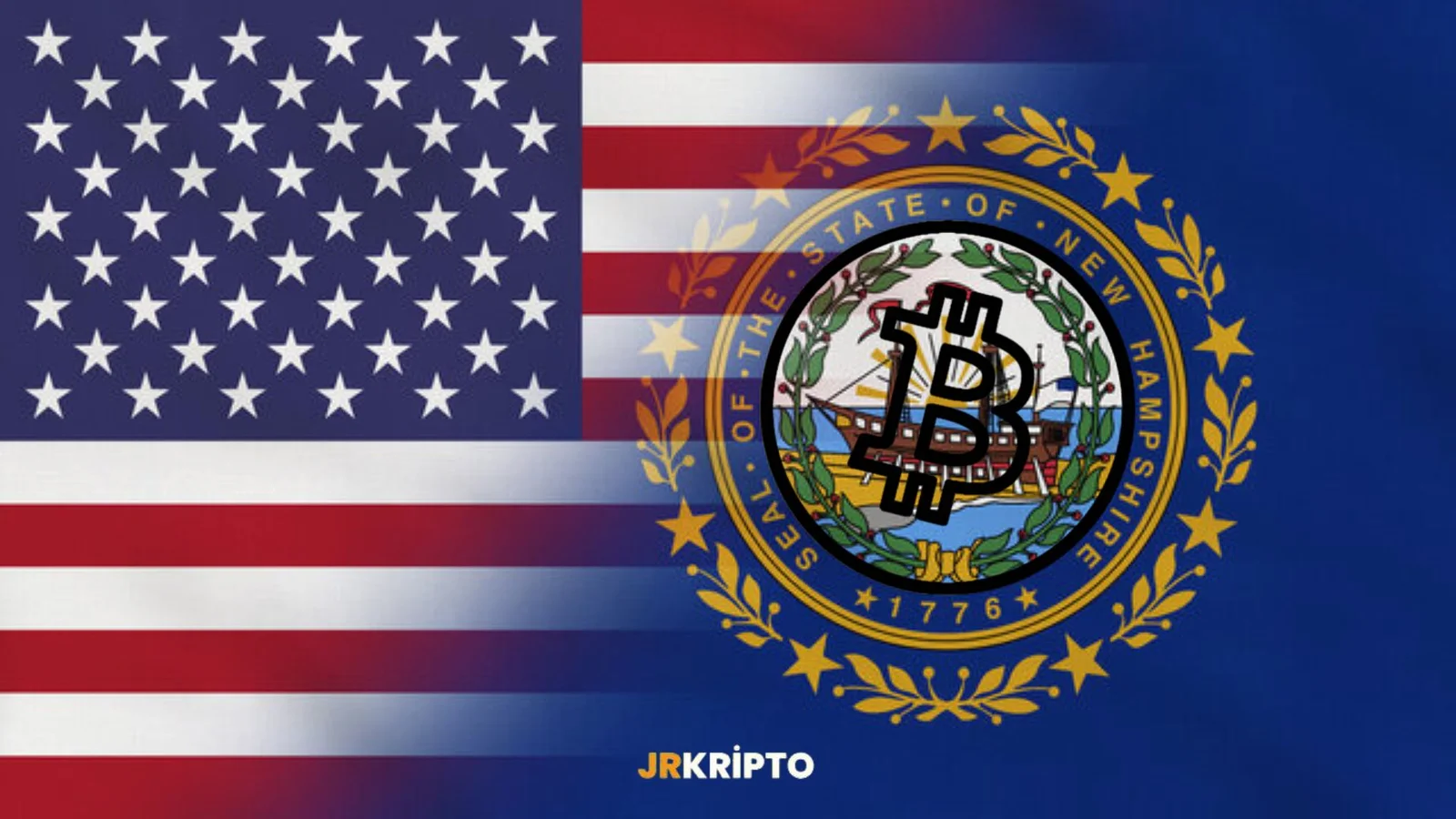
Daily Market Summary with JrKripto 6 May 2025
You can find today’s “Daily Market with JrKripto,” where we compile the most important developments in global and local markets, below. Let’s analyze the general market conditions together and take a look at the latest updates.Here’s the updated version, aligned with current prices and presented as a single, cohesive text:Bitcoin (BTC) is currently trading at $94,300. Following an upward trend that began at the $75,930 support level, the price has managed to hold above the $94,000 mark. BTC continues to test the resistance zone between $95,000 and $96,000. If this level is broken to the upside, $101,000 could emerge as the next target. However, if profit-taking occurs around current levels, the first support lies at $90,500. Below that, $86,500 is considered a stronger support level.Ethereum (ETH) is trading at around $1,800. The recovery that started from the $1,486 support has pushed ETH back above the $1,800 level. Should the upward momentum continue, the resistance levels to watch are $1,888 and $1,950. On the downside, $1,790 will be the first support point in case of a pullback. If ETH drops below this level, $1,700 could act as the next support. Staying above $1,790 is key for ETH to maintain its current upward trend.Crypto NewsChinese President Xi stated: “We are ready to work with EU leaders to expand mutual openness and properly manage frictions and disagreements.”Tether minted $1 billion worth of USDT.Strategy announced the purchase of 1,985 BTC.Binance founder CZ stated that he proposed BNB and BTC as the initial reserve currencies for Kyrgyzstan’s national crypto fund. Previously, CZ had joined Kyrgyzstan’s National Crypto Committee upon the invitation of President Sadyr Japarov.VanEck submitted an S-1 filing for a BNB ETF.President Trump said, “I want crypto. Crypto is important because if we don’t do it, China will.”Top Gainers:DAKU → Up 28.6% to $0.1833SAROS → Up 14.8% to $0.1510TURBO → Up 14.1% to $0.0060MOVE → Up 11.4% to $0.1870SAFE → Up 10.7% to $0.4922Top Losers:LAYER → Down 37.6% to $1.96RAY → Down 13.4% to $2.31DEEP → Down 9.0% to $0.1734BRETT → Down 8.4% to $0.0505FLR → Down 8.4% to $0.0180Other Metrics:24-Hour Volume: $64.06BMarket Cap: $2.92TFear & Greed Index:Bitcoin: 57 (Greed)Ethereum: 51 (Neutral)Dominance:Bitcoin: 64.87% ▲ 0.05%Ethereum: 7.54% ▼ 0.45%Daily Net ETF Flows:BTC ETFs: $425.50 MillionETH ETFs: $0.0 MillionGlobal MarketsU.S. stock indices ended the first trading day of the week with minor losses after nine consecutive days of gains. The S&P 500 fell by 0.64%, the Dow Jones by 0.24%, and the Nasdaq by 0.74%. The consumer staples sector stood out with a slight increase, while energy (-2.02%), consumer discretionary (-1.32%), and tech (-0.85%) were the weakest.The drop in energy stocks was triggered by OPEC+ announcing an additional daily output of 411,000 barrels. Following the announcement, oil prices dropped by 1.85%. Furthermore, former President Donald Trump’s proposal to impose a 100% import tariff on foreign films led to selling pressure in media and entertainment stocks.Looking at economic data, the U.S. ISM services PMI rose to 51.6 in April, beating expectations of 50.2 and March’s 50.8, indicating accelerated activity in the service sector. The new orders index rose to 52.3, suggesting increased demand. However, the employment index remained in contraction territory at 49. The prices index surged to 65.1, the highest since January 2023, reflecting mounting cost pressures. The delivery times index rose to 51.3, suggesting slower deliveries.On the other hand, the S&P Global Services PMI for April was revised down from 51.4 to 50.8, indicating slight weakness. Today, the U.S. will release its March trade balance data; in February, the trade deficit was $122.7 billion.In global markets, China’s Caixin services PMI came in at 50.7, below the expected 51.7, creating a mixed outlook across Asian markets, while European markets are expected to open flat.Markets are now focused on the Fed’s interest rate decision and Chair Powell’s remarks. The Fed is expected to hold rates steady. U.S. weekly crude oil inventory data is also on today’s economic agenda.Most Valuable Companies and Stock PricesMicrosoft (MSFT) → $3.24T market cap, $436.17 per share, up 0.20%Apple (AAPL) → $2.99T market cap, $198.89 per share, down 3.15%NVIDIA (NVDA) → $2.78T market cap, $113.82 per share, down 0.59%Alphabet (GOOG) → $2T market cap, $166.05 per share, up 0.14%Amazon (AMZN) → $1.98T market cap, $186.35 per share, down 1.91%Borsa IstanbulIn Borsa Istanbul, weak momentum and capital outflows persist. Due to high interest rates, poor earnings reports, and ongoing political risks, the pressure on BIST is expected to continue. Technically, the 9000–9100 range serves as support, while the 9250–9280 zone is resistance. About 35% of companies have reported Q1 2025 results, and only 15% showed positive outcomes across six key metrics: revenue, gross profit, EBITDA, EBITDA margin, net profit, and return on equity. This is likely to lead to downward revisions in 12-month average targets and keep the index in a narrow range.Today, PMI and PPI data from Europe will be monitored. Turkey’s 5-year CDS started the day at 349 basis points.In April, Turkey’s CPI rose by 3.0% monthly, slightly below the 3.2% forecast. Annual inflation dropped to 37.86%, down 0.2 points. Core inflation indicators — the B index at 36.8% and the C index at 37.1% — showed minor declines. Due to currency movements, PPI increased by 2.76% month-on-month and fell to 22.5% year-on-year. This trend suggests an upward pressure on inflation, driven by TL depreciation and regulated price adjustments.Today, Turkey’s real effective exchange rate for April will be released. The Treasury will also conduct auctions for 2-year fixed coupon and 7-year floating rate bonds.Following the inflation report, Finance Minister Mehmet Şimşek stated that the year-end inflation is still expected to remain within the Central Bank’s forecast range. He also mentioned that due to new U.S. trade policies, some American companies are in talks to manufacture in Turkey, and efforts to combat the informal economy will be intensified. He will meet with investors in London and Doha next week.Data shows that demand for automobiles, especially imported ones, hit record highs in April. Externally, risk-off sentiment prevails ahead of the Fed meeting. Domestically, Central Bank Governor Fatih Karahan will present to the Parliament’s Planning and Budget Committee today.The BIST 100 index climbed to 9241 yesterday but closed at 9112 after selling pressure. The rebound from 9058 confirms that the 9044–8870 band is a strong support zone. As long as the index stays above this range, recovery may continue. However, sustained trading below this level could lead to a sharper decline toward the 8618–8500 zone. On the upside, 9490–9594 is the next resistance zone, and if breached, the 9740–9895 band may come into play. The index is expected to remain flat in the short term.Most Valuable Companies on Borsa IstanbulQNB Finansbank (QNBTR) → 900.31B TL market cap, 270.00 TL per share, up 0.47%Aselsan (ASELS) → 591.89B TL market cap, 136.90 TL per share, up 5.47%Garanti Bank (GARAN) → 425.88B TL market cap, 102.80 TL per share, up 1.38%Turkish Airlines (THYAO) → 405.72B TL market cap, 293.75 TL per share, down 0.09%ENKA Construction (ENKAI) → 373.70B TL market cap, 64.35 TL per share, up 0.94%Precious Metals and Currency RatesGold: 4,165 TLSilver: 41.06 TLPlatinum: 1,216 TLUSD: 38.60 TLEUR: 43.73 TLLooking forward to seeing you again tomorrow with the latest updates!

Countdown To Fed Rate Cut Begins
The U.S. Federal Reserve’s interest rate policy has once again become the focal point of global markets.After keeping rates steady at the last two meetings, the Fed has now begun signaling potential cuts.A slowdown in inflation, a drop in the pace of economic growth, and public calls from President Trump have strengthened expectations of a rate cut.Markets broadly expect no change at the May meeting, but anticipate that cuts could begin as early as June.Signals Point to JuneCleveland Fed President Beth Hammack said that the May meeting would be too early for a rate cut, while highlighting June as a key threshold.If the relative decline in inflation continues and the slowdown in economic activity deepens, rate cuts are expected to be on the agenda at the June 17–18 meeting.This expectation has already been reflected in the markets.Interest rate futures are now pricing in a 25 basis point cut in June.The Fed’s continued emphasis on “economic activity remaining strong” signals that they will time the move with caution.Trump Increases PressureU.S. President Donald Trump has intensified his calls for rate cuts.In a White House statement, he said,“Overall prices are falling, energy prices are declining. I hope the Fed lowers rates,” delivering a direct message.Trump’s bid for re-election increases the risk of the Fed’s rate policy becoming more politicized.Especially a White House looking to boost economic activity may see inflation nearing the 2% target as sufficient justification for a rate cut.Gold, Bonds, and Market ReactionsMarkets have already started pricing in expectations.Gold has reached its highest levels in recent times.Rate cut expectations are pulling down bond yields, while interest in risk assets is once again rising.Recovery signals are also visible in Bitcoin and the Nasdaq.Investors Watching June CloselyNo changes are expected in May, but June represents a critical turning point for the Fed.The direction of inflation and other economic data suggest that rate cuts may not be far off.The Fed is likely to enter the summer of 2025 with a rate cut.As the economy starts signaling a rebound, this move could define the new trajectory for financial markets.
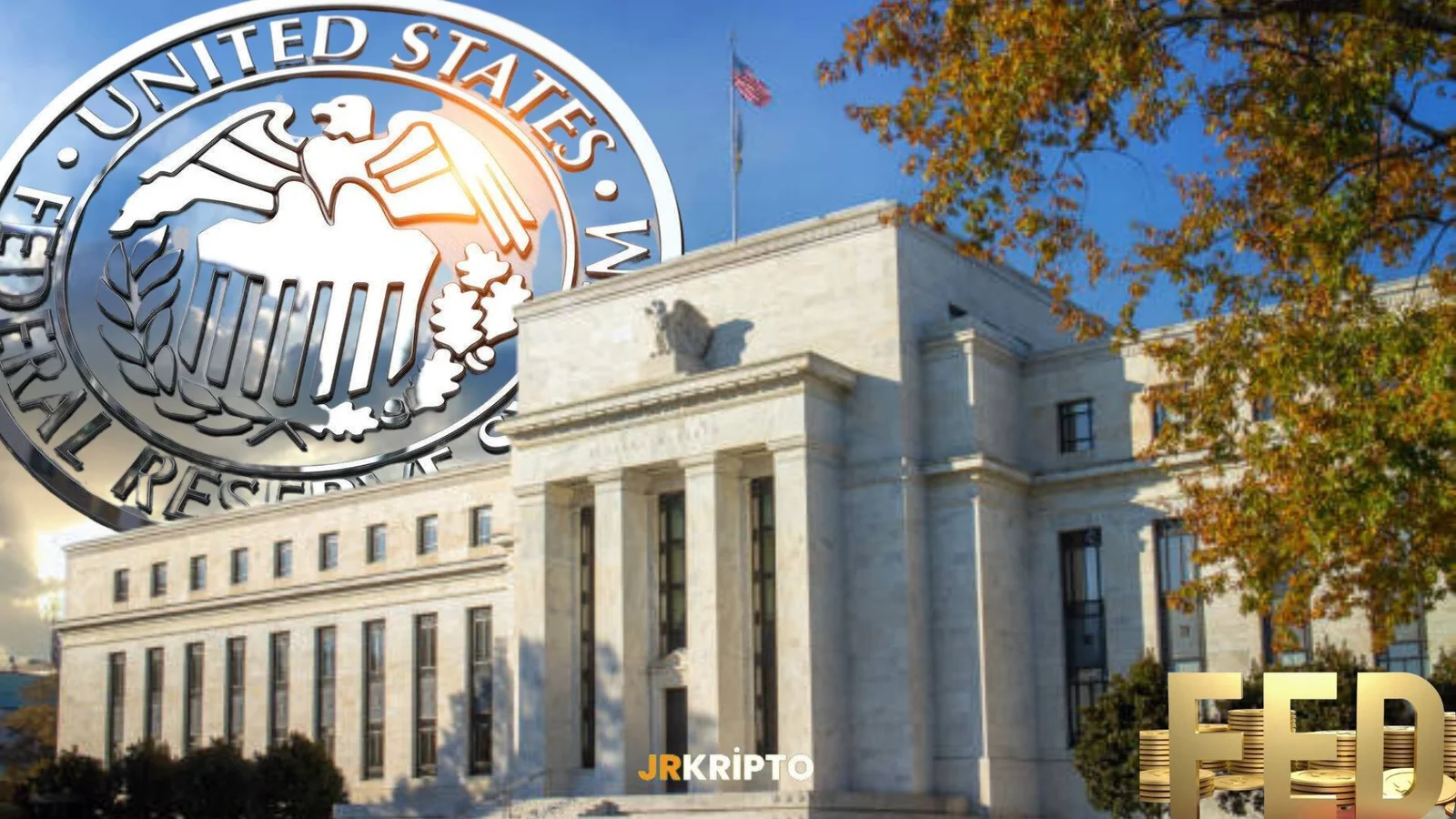
Trump: "I Want Crypto, Because If We Don't, China Will"
US President Donald Trump has caused repercussions in the cryptocurrency market with his recent statements. Speaking to NBC News, Trump said that digital assets are no longer just an investment vehicle, but have become a national priority. “I want crypto, crypto is important because China will do it if we don't,” he said, adding that the United States cannot remain passive in the digital finance race.Digital Finance Is Now a Strategic Issue For the United StatesTrump's exit is not only at the level of rhetoric. The USD1 stablecoin, which was launched through his family-owned World Liberty Financial, will be used by Abu Dhabi-based MGX for a $2 billion investment. This step reveals that the Trump family intends to shape the digital dollar on its own initiative.Given the aggressive steps China has taken on the digital yuan, Trump's words take on even more meaning. The president draws attention to the risk that the United States will lose leadership in this area and argues that competition in the digital economy no longer has a technological, but a geopolitical dimension.The Markets Got The MessageAnalysts say that this clear stance of Trump may create an atmosphere of confidence for institutional investors in the long run.Although it seems to have had a limited impact on prices in the short term, Trump's cryptocurrency-friendly messages are the kind that could determine the direction of regulations in the future. This attitude may trigger developments such as relaxing SEC policies, accelerating ETF approval processes, and increasing public-private cooperation in next-generation stablecoin infrastructures.Trump's words ”I want crypto, because if we don't, China will," are not just a political outlet. This statement is a reemergence of the US's claim to leadership in the digital economy. While the world is talking about crypto, now the White House is also in this game.
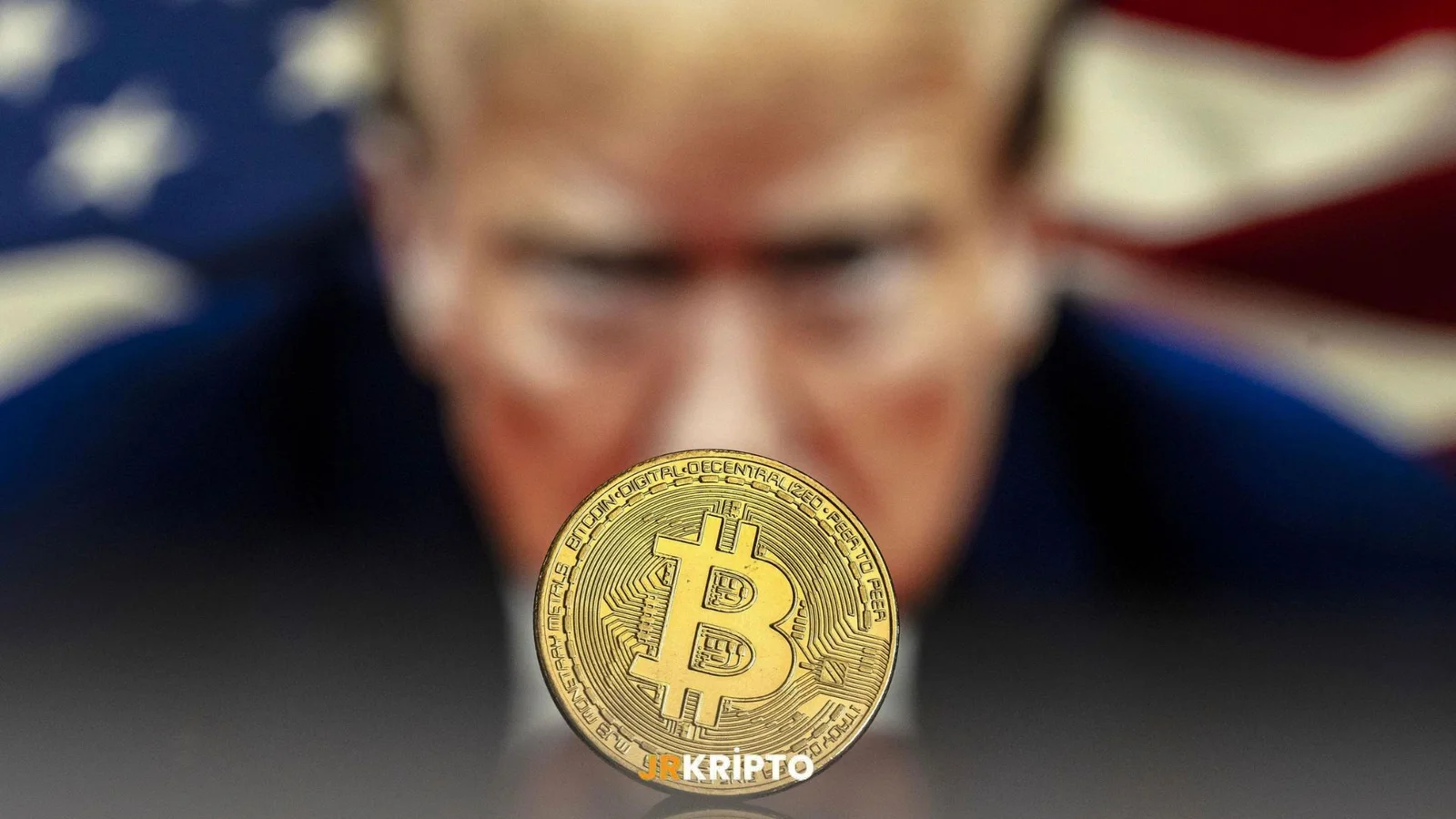
Kyrgyzstan's New Roadmap: Is the Era of Bitcoin and BNB Coming in Reserves?
A news that has attracted attention in the crypto world has come from Central Asia. The founder of Binance, CZ, namely Changpeng Zhao, joined the country's National Crypto Committee at the invitation of Kyrgyz President Sadyr Japarov and made a very sound proposal: Bitcoin (BTC) and Binance Coin (BNB) should be used for national reserves.This proposal was suddenly asked, “Is Kyrgyzstan stepping into its digital future so fast?” he raised the question.What Does It Mean to Hold Reserves with Crypto?According to CZ, crypto assets such as BTC and BNB can be the reserve assets of not only individual investors, but also states. This would be a big step for developing countries such as Kyrgyzstan. It both creates an alternative in the fight against inflation and becomes a powerful symbol in the transition to a digital finance system.In line with this vision, there is a memorandum of understanding signed on April 3. This document is not just a statement of intent, it has concrete goals ranging from blockchain education to digital pay systems.Binance Pay Comes to Life in KyrgyzstanAccording to the agreement, Binance Pay will be actively used in the country. In other words, people in Kyrgyzstan will be able to do their coffee and grocery shopping with crypto. This is a development that will lead the region, especially in the field of digital pay systems.A system is being considered that everyone can use, from tourists to local residents. When safety and speed are also involved, there is no reason why this system should not hold.Transformation Supported by EducationBut technology alone is not enough. Information is needed for this transformation to stand. This is where Binance Academy comes into play. The goal is not just to use blockchain, but to produce it. Educational programs are planned for everyone from public servants to students. Kyrgyzstan wants to be not only a consumer, but also a developer.Digital Som and Crypto ReservesAnother important development is the "digital som." Kyrgyzstan's official digital currency is now legal. In other words, the CBDC (Central Bank Digital Currency) is now on constitutional ground in this country. Binance is also supporting this project in a technical sense.On top of that, the evaluation of BTC and BNB as a national reserve instrument is also on the agenda. If this comes to life, Kyrgyzstan will be the first country in Central Asia to use crypto at this level.What Does Kyrgyzstan Want to Do?Let's put it simply, he wants to be ready for the finance of the future and to diversify his economy. By collaborating with global figures such as CZ, it makes this not only a technology investment, but also a matter of prestige.When these steps taken by Kyrgyzstan are referred to as ‘digitalization’, it reminds us that not only infrastructure, but also vision and courage are required. Holding Bitcoin in reserves or buying coffee with crypto on the street may seem radical for today. But the world is changing rapidly. And this time the change may be starting from Bishkek.

U.S. Senator Lummis: Bitcoin Law Is the Only Solution to the $36 Trillion Debt
As the United States’ national debt surpasses $36 trillion, Senator Cynthia Lummis has proposed a striking solution to address this massive economic issue: the Bitcoin Act. According to Lummis, simply passing this bill would be enough to solve the country’s debt problem.Introduced to Congress in March 2025 by Senator Lummis and Representative Nick Begich, the Bitcoin Act proposes that the U.S. Department of the Treasury purchase 200,000 Bitcoins per year over the next five years, building a strategic reserve of 1 million BTC in total. This move aims to strengthen the U.S.'s leadership in digital assets and diversify its financial reserves.Full Support from TrumpU.S. President Donald Trump publicly endorsed this initiative.With an executive order signed in March, he paved the way for the Strategic Bitcoin Reserve plan.Trump proposed that the reserve be funded using Bitcoins seized from criminal proceeds, aiming to build a digital asset reserve without burdening taxpayers.Trump’s statement was noteworthy:"With this step, America can become the crypto capital."National Reserve Plan with BitcoinAt the heart of the plan are Bitcoin’s characteristics of limited supply and decentralization.Lummis argues that these features could help protect the U.S. against inflation and provide an alternative solution to the national debt crisis.A reserve of 1 million BTC would account for approximately 5% of Bitcoin’s total supply.Such a large-scale purchase could have strong effects on the market, both in terms of price and perception.The Bitcoin Act is a radical proposal aimed not only at reducing the U.S. debt burden but also at initiating an innovative transformation in the financial system.Senator Lummis’s proposal shows that digital assets have now moved to the center of global economic policy.The fate of this proposal will depend on its implementation process, political support, and market reactions.
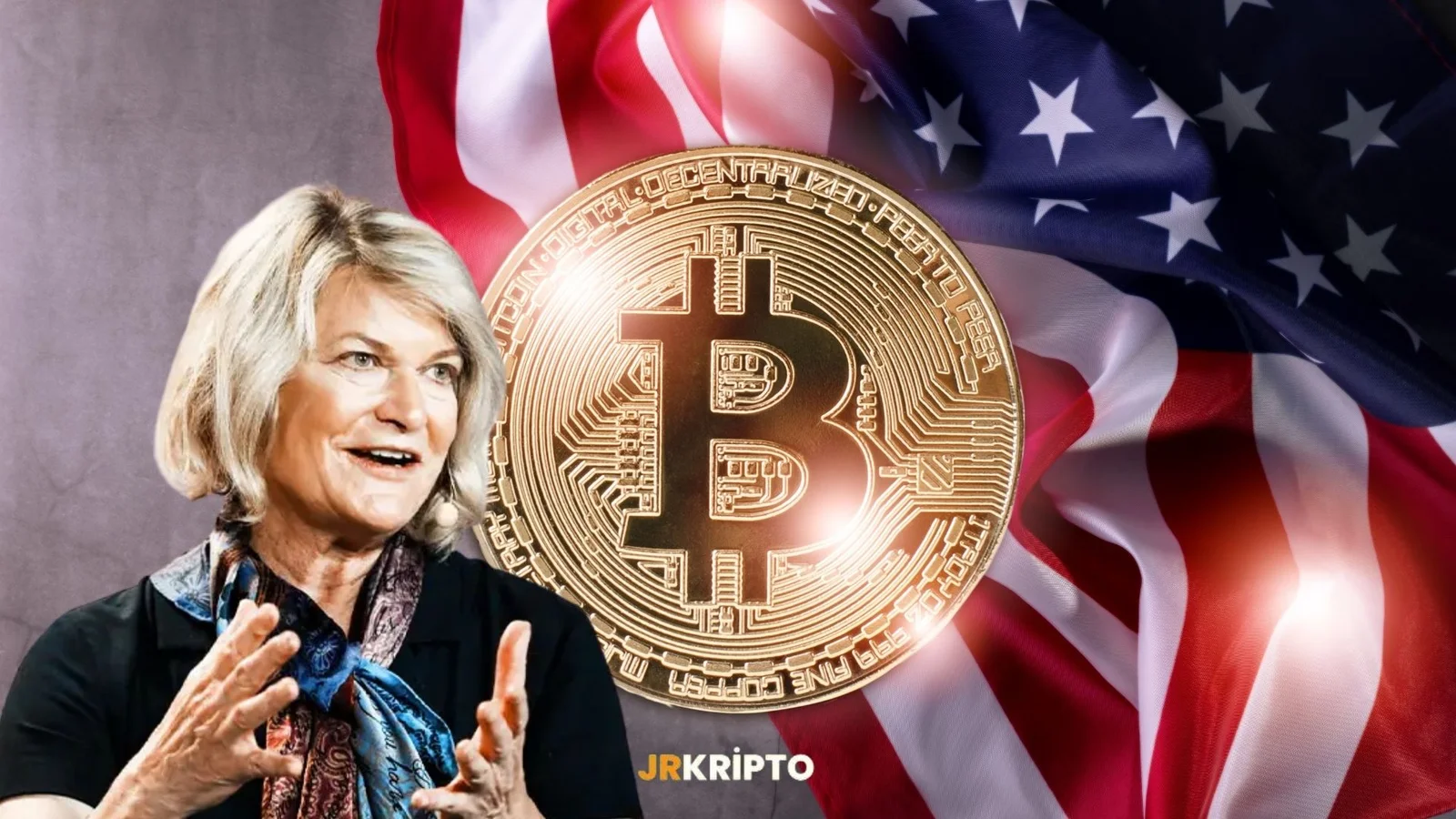
Morgan Stanley Is Expanding Its Crypto Services Through E*TRADE
U.S.-based financial giant Morgan Stanley is preparing to offer cryptocurrency trading services through its retail investment platform E*TRADE.Although the project is still in the development phase, top executives are targeting a 2026 launch for the service.With this move, the bank plans to provide spot trading of leading digital assets like Bitcoin and Ethereum directly to E*TRADE users.Currently, Morgan Stanley only offers indirect access to crypto through products like crypto ETFs and futures, and only to high-net-worth clients.Infrastructure Partnerships and Competitive StrategyThe new crypto service requires a robust technical infrastructure and collaboration with industry-experienced partners.Morgan Stanley is considering working with one or more leading crypto firms to build the cryptocurrency trading infrastructure.According to internal sources, the bank has been regularly discussing these strategic plans since the end of 2023.This initiative aims to strengthen E*TRADE's competitive position, particularly against platforms like Robinhood and Coinbase.Offering direct crypto trading to retail investors could expand E*TRADE’s product offering and help grow its user base.Morgan Stanley’s move also aligns with a more favorable regulatory environment toward crypto.After the Trump administration returned, the SEC and the Department of Justice rolled back some enforcement actions, enabling traditional banks to take more definitive steps into the crypto market.Competition in the Crypto Market Is DeepeningIf E*TRADE users gain access to spot crypto trading next year, it could shift the balance in the industry.This step shows that traditional financial institutions are now beginning to directly integrate crypto.With this move, Morgan Stanley is not only expanding its digital asset strategy, but also strengthening its position in the retail investor market.If the project is implemented, it is expected that cryptocurrencies will become more accessible through institutional channels in the U.S. financial market.
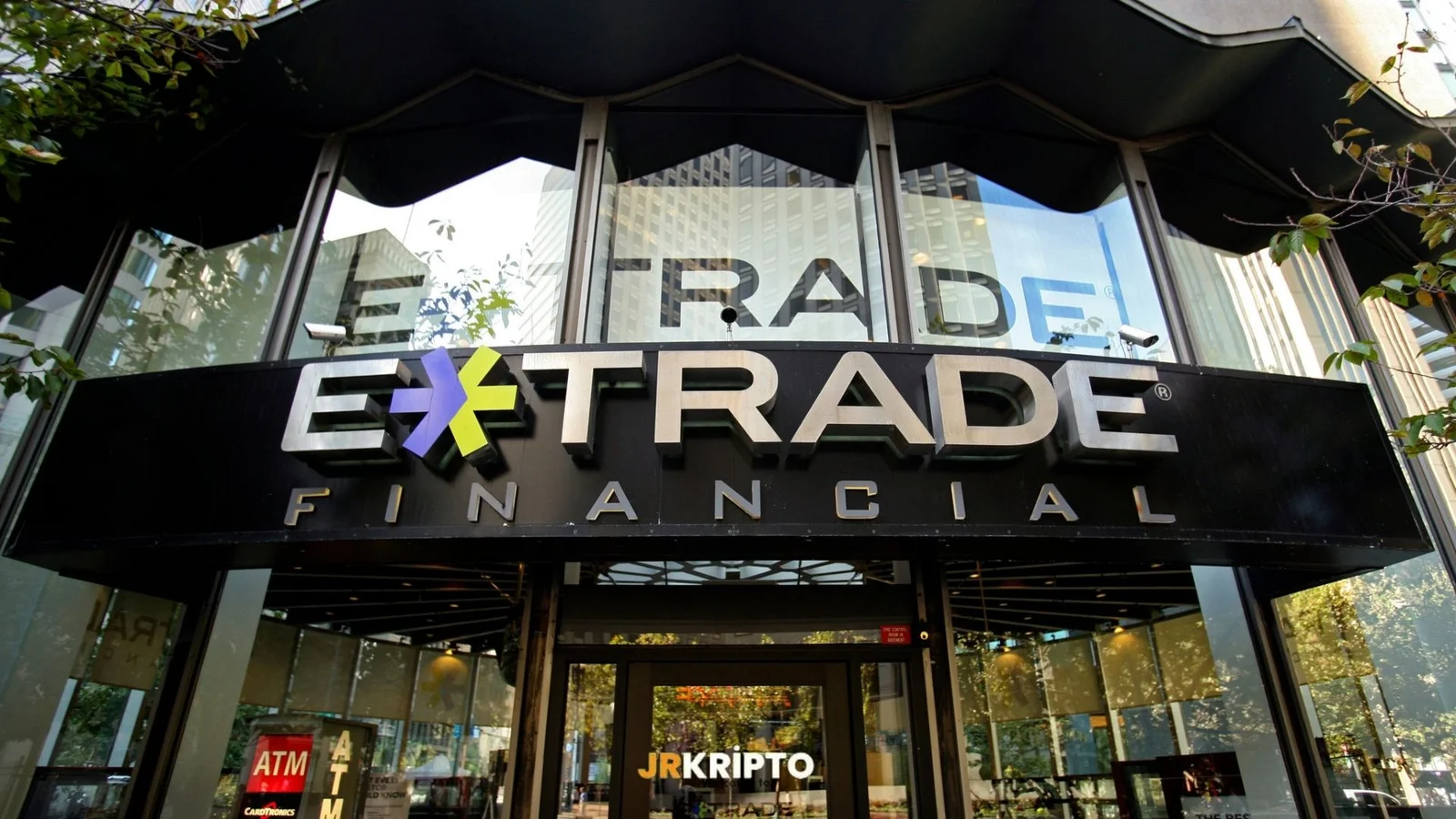
The UK Is Preparing to Ban the Use of Credit in Crypto Investments
The Financial Supervisory Authority (FCA) of the United Kingdom has taken action for new regulations that will prohibit the use of credit in crypto investments.The goal is clear: to stop the increasing borrowing in the crypto market and protect the investor against high-risk positions.According to the FCA's proposal, investors will no longer be able to buy cryptocurrency through borrowing methods such as credit card, personal loan or e-money loan.This decision aims to bring the rapidly growing digital asset market to a more controlled structure.Why Is This Step Being Taken?While the purchase rate of crypto investments with debt was 6% in 2022, this rate increased to 14% in 2024.This means that investors face the risk of not being able to pay their debts, especially during periods of sharp market declines.The FCA notes that this situation is unsustainable and draws attention to the “high-risk and speculative” nature of crypto assets.In a statement, it was emphasized that crypto investors should be prepared to lose all their money.The Scope of the New Regulation Is WideThe ban is not limited to credit cards only. The FCA offers a broad framework that also covers different borrowing methods, such as personal loans and e-money loans.Despite this, it is stated that some stablecoins issued by organizations authorized by the FCA may be exempt from this regulation.In addition;How crypto trading platforms separate their own transactions from user transactions,Ensuring transparency in transaction pricing and execution processes,To cover the losses caused by third parties of the organizations providing staking servicessuch applications will also be made mandatory.How Will the Process Work?The crypto sector supports the FCA's investor protection-oriented approach in principle, but there are some reservations about its implementation.In particular, it is a matter of curiosity how to implement such a complex regulatory structure effectively.The FCA plans to collect opinions from the public by June 13, 2025.After this process, the final regulations are expected to come into force.
